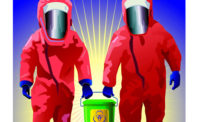Fast and efficient responses to crash events and disasters depend upon emergency medical services (EMS) workers, who include first responders, emergency medical technicians, and paramedics, as well as firefighters and nurses. Often, EMS workers treat patients in ambulances en route to the hospital, which presents the inherent risk of high-speed travel. In fact, nationwide, EMS workers are more likely to die on the job compared to all other workers, with nearly half of these deaths stemming from motor vehicle crashes on our highways. Between 1992 and 2011, 21% of deaths from ambulance crashes were among EMS workers and patients, and 4% were among ambulance drivers, according to data from the National Highway and Traffic Safety Administration. In the majority of these crashes, the EMS worker was unrestrained.
To decrease the risk, investigators at the National Institute for Occupational Safety and Health (NIOSH) work with several federal partners and private ambulance manufacturers to design safer patient compartments for ambulances. The goal of this work is to design interiors that would allow the EMS worker to do his or her job while remaining seated and properly restrained. This research also aligns with the NIOSH Prevention through Design initiative, which strives to protect workers by minimizing work-related safety and health risks by building safety into the design and manufacturing process.
Over the past several years, NIOSH, with its partners, conducted 15 full-vehicle ambulance crash tests. The findings from these tests have contributed to the development of several new crash-test methods focused on improving seating and restraint structural integrity. It has also highlighted the need for anthropometric—or body measurement—data of EMS workers to improve seating, restraints, and interior workstation design. To support seating, restraint, and workstation design to address this need, NIOSH investigators identified and collected a set of 39 body dimensions and weights. Between December 2013 and May 2015, the investigators collected these data from 472 male and 161 female EMS workers from four regions including the Northeast and Mid-Atlantic, the South, the Midwest and Great Lakes, and the Pacific West. The measurements included everything from the depth of the abdomen while the subject is sitting, to the length from the elbow to the middle fingertip. With these carefully selected measurements, the investigators developed a new anthropometric database that may help ambulance manufacturers improve the design of the ambulance patient compartment for safe and effective use. The database is currently available on the NIOSH website.
More information is available:
- NIOSH Anthropometric Database for the EMTs in the United States
- NIOSH Anthropometry
- NIOSH Emergency Medical Services Workers
- NIOSH Continues Research to Improve Safety for Ambulance Service Workers and EMS Responders
- Fatal and Nonfatal Injuries among Emergency Medical Technicians and Paramedics
- Keeping Workers Safe



